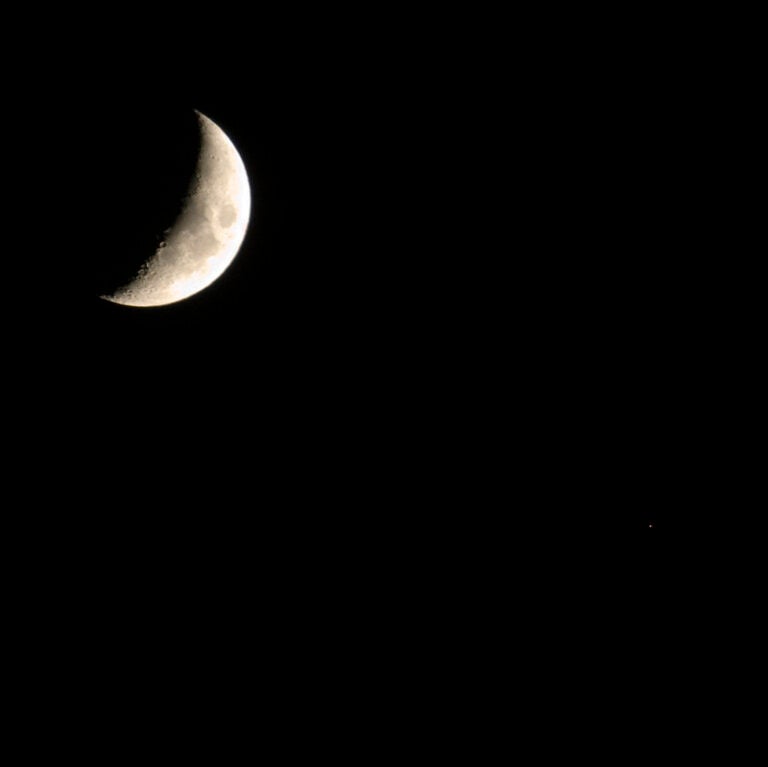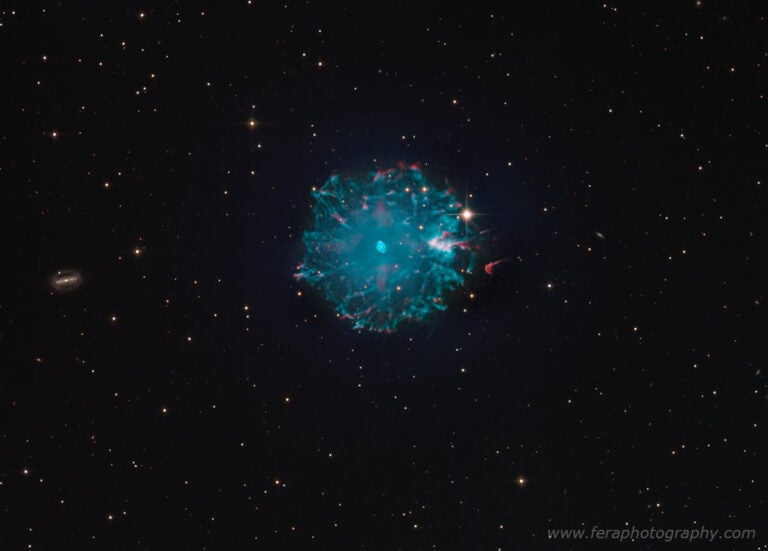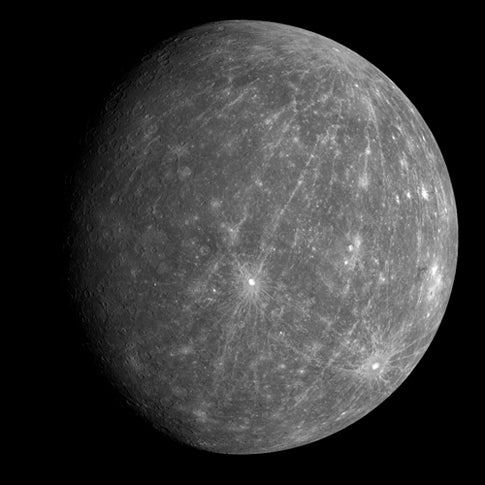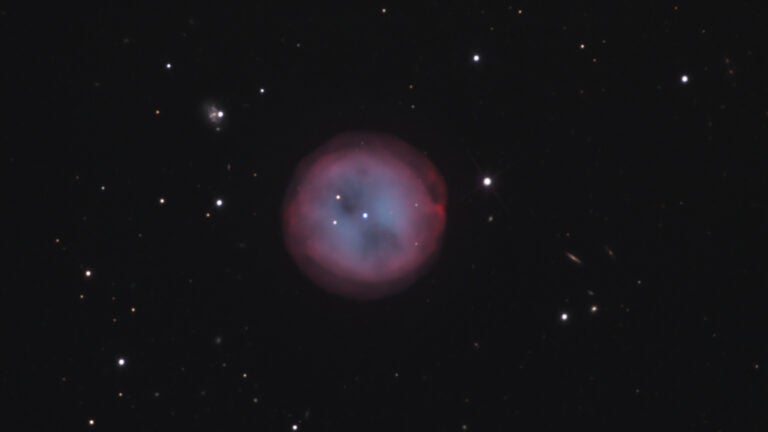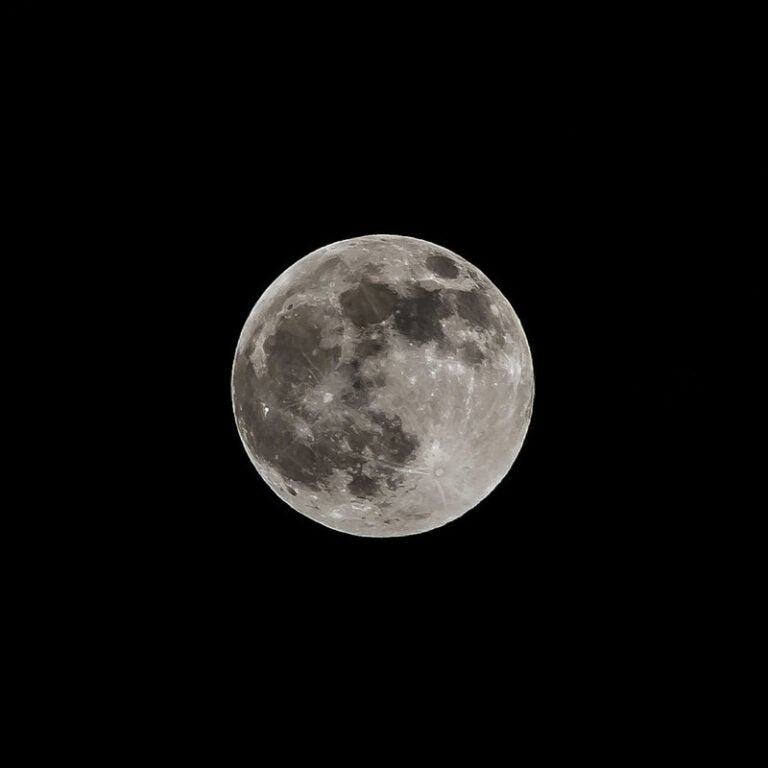Mars began March among the background stars in the southeastern part of the constellation Leo the Lion. The Red Planet is on a path that carries it west-northwest toward the Lion’s brightest star, 1st-magnitude Regulus (Alpha [α] Leonis). It will end the month about 5° shy of that target glowing at a still-impressive magnitude –0.7. But you can see Mars pass through Leo without any optical aid.
For those of you with a telescope, the Red Planet’s path takes it near the bright galaxies M95, M96, and M105. Start observing March 15 and keep going through the 21st. A 4-inch scope will show you all of these objects, but you will need to observe from a dark site. Galaxies are notoriously hard to see if even a moderate amount of light pollution is present. The bigger your scope, the better your view.
Mars will be close to all of these galaxies the night of the 15th, but on March 16 at 6 A.M. EDT, the action really begins. That’s when the Red Planet lies just 8′ northeast of M96. Mars blazes at magnitude –1.1, an astounding 14,500 times brighter than the galaxy, which glows softly compared to the planet even though, at magnitude 9.3, it’s one of the sky’s brightest such objects.
In the early morning hours of March 17, Mars will lie between magnitude 9.7 M95 and M105, which, like M96, shines at magnitude 9.3. The Red Planet will be 34′ northeast of M95 and 44′ southwest of M105.
During the next several mornings, you will find Mars still in the immediate area of these galaxies. Only on the 21st will the planet move more than 1° from M95. If you enjoy astrophotography, this week marks a rare opportunity to capture a naked-eye planet and several well-known deep-sky objects.
These three galaxies belong to the M96 group, sometimes called the Leo I group, which lies at a distance of 38 million light-years from Earth. Nine galaxies make up the M96 group. Along with M95, M96, and M105, magnitude 9.2 NGC 3384 and magnitude 10.4 NGC 3377 are the brightest members.
And here’s a fast fact for those of you who love numbers. On March 16, Mars lies 63.7 million miles (102.5 million kilometers) from Earth. That means the M96 group is three and a half trillion times farther away than the Red Planet. Inconceivable!
Expand your observing at Astronomy.com
StarDome
Check out Astronomy.com’s interactive StarDome to see an map picture of your sky. This tool will help you locate Mars and the trio of galaxies.
The Sky this Week
Get a daily digest of celestial events coming soon to a sky near you.
Observing Talk
After you listen to the podcast and try to find the objects, be sure to share your observing experience with us by leaving a comment at the blog or in the Reader Forums.



